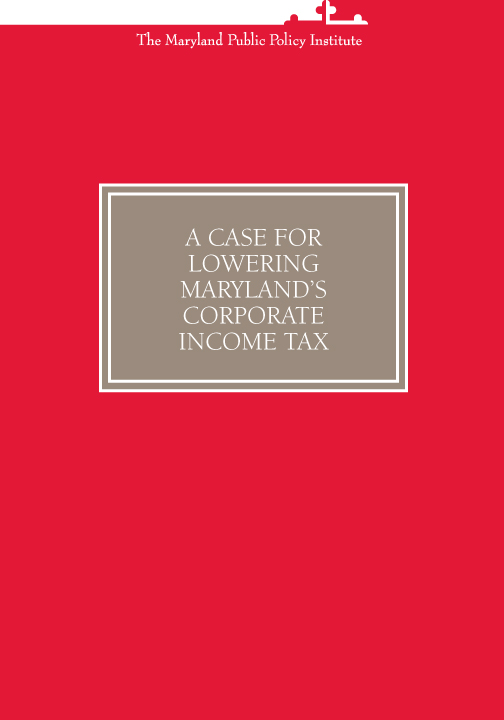
A Case for Lowering Maryland's Corporate Income Tax
In the past two decades, the U.S. federal corporate income tax (FCIT) has attracted a disproportionate amount of criticism and calls for its complete overhaul, and for good reasons. It is one of the most distortionary, complicated, and expensive-to-comply-with taxes. It causes significant misallocations of physical and human capital, and its incidence falls heavily on consumers in terms of higher prices, on workers in terms of lower wages, and on savers in terms of lower returns to capital investment. Despite being levied at one of the highest rates in the world, it generates relatively little revenue due to myriad loopholes, which tend to benefit the largest of corporations.
Maryland’s state corporate income tax (SCIT) shares many of the aforementioned handicaps. At 8.25 percent, it is one of the highest corporate taxes in the nation. Combined with the already high FCIT rate, Maryland’s high SCIT makes it difficult to retain and attract new corporate investment in this increasingly competitive and interconnected world. Furthermore, despite the high rate, Maryland’s SCIT amounts to a smaller share of total revenue and gross state product (GSP) compared to other states. Evidence from academic literature and our own estimates in this study suggest that Maryland’s SCIT rate is likely to be on the revenue-losing side of the Laffer curve. Our estimates indicate that bringing the SCIT rate down to 6 percent would elevate the state’s competitiveness, overall economic activity, and probably Maryland’s SCIT tax revenue as well.
Executive Summary
In the past two decades, the U.S. federal corporate income tax (FCIT) has attracted a disproportionate amount of criticism and calls for its complete overhaul, and for good reasons. It is one of the most distortionary, complicated, and expensive-to-comply-with taxes. It causes significant misallocations of physical and human capital, and its incidence falls heavily on consumers in terms of higher prices, on workers in terms of lower wages, and on savers in terms of lower returns to capital investment. Despite being levied at one of the highest rates in the world, it generates relatively little revenue due to myriad loopholes, which tend to benefit the largest of corporations.
Maryland’s state corporate income tax (SCIT) shares many of the aforementioned handicaps. At 8.25 percent, it is one of the highest corporate taxes in the nation. Combined with the already high FCIT rate, Maryland’s high SCIT makes it difficult to retain and attract new corporate investment in this increasingly competitive and interconnected world. Furthermore, despite the high rate, Maryland’s SCIT amounts to a smaller share of total revenue and gross state product (GSP) compared to other states. Evidence from academic literature and our own estimates in this study suggest that Maryland’s SCIT rate is likely to be on the revenue-losing side of the Laffer curve. Our estimates indicate that bringing the SCIT rate down to 6 percent would elevate the state’s competitiveness, overall economic activity, and probably Maryland’s SCIT tax revenue as well.





